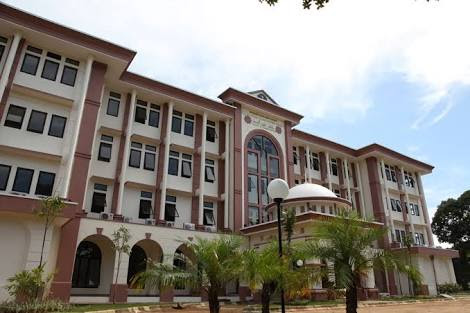MISCONCEPTION ANALYSIS IN TERMS OF STUDENT LEARNING STYLES
Abstract
This study aims to determine students' misconceptions in social arithmetic material when viewed from student learning styles. The population in this study was 28 students of class VII F MTs Negeri 5 Cirebon. The research form used in this study is qualitative research, with a research strategy that is a case study. Data collection techniques used were 1) the observation method, 2) the tests method, 3) the questionnaire method, 4) the interview method is conducted for students who experience misconceptions after adjusting to the student's learning style. The results of this study are 1) Students who have a visual learning style do not experience misconceptions in mathematical concepts, but students experience misconceptions in the process of counting and translation. 2) Students who have auditorial learning styles, there are no misconceptions in mathematical concepts, but students experience errors in the final calculation process. 3) Students who have kinesthetic learning styles it is suspected that students have conceptual misconceptions because students do not understand the concept of the process including students who do not understand the mathematical formulas and values that must be used and students do not understand calculations. In general, the causes of misconceptions in students who have visual learning styles, auditory and kinesthetic, are derived from student understanding and teacher learning methods.
Downloads
References
Aledya, V. (2019). Kemampuan pemahaman konsep matematika pada siswa. Medan. Retrieved from https://www.researchgate.net/publication/333293321_KEMAMPUAN_PEMAHAMAN_KONSEP_MATEMATIKA_PADA_SISWA/link/5ce5705a458515712ebb6708/download.
Alfiani, D., Muchyidin, A., & Izzati, N. (2019). Pengaruh penerapan model pembelajaran sscs (search, solve, create, share) terhadap miskonsepsi siswa pada soal matematika bentuk cerita. Limacon: Journal of Mathematics Education, 1(2), 49–58. Retrieved from http://jurnal.fkip.unila.ac.id/index.php/limacon/article/view/20405.
Anwar, S. (2014). Ujian nasional menjadi tolak ukur pendidikan di indonesia. Retrieved February 14, 2020, from https://www.kompasiana.com/www.syahrul.com/54f7a2bba33311fc208b45e0/ujian-nasional-menjadi-tolak-ukur-pendidikan-di-indonesia.
Arikunto, S. (2013). Prosedur penelitian suatu pendekatan praktik. Jakarta: Rineka Cipta.
Bhagat, A., Vyas, R., & Singh, T. (2015). Students' awareness of learning styles and their perceptions to a mixed-method approach for learning. International Journal of Applied and Basic Medical Research, 5(4), 58. https://doi.org/10.4103/2229-516x.162281.
Bok, D. (2017). How to improve the quality of higher education. Retrieved February 14, 2020, from https://www.insidehighered.com/views/2017 /09/21/how-improve-quality-higher-education-essay.
Bungin, H. B. (2015). Penelitian kualitatif. Jakarta: Kencana.
Corbitt, W. K. (2017). Learning styles and metacognitive awareness : How They affect the L2 listening process of at-risk students in a modified foreign language program (MFLP). Dimension. Retrieved from https://files.eric.ed.gov/fulltext/EJ1207902.pdf.
DePorter, B., & Hernacki, M. (2003). Quantum learning. Bandung: Kaifa.
Fauziah, U. (2019). Matematika ilmu penting di kehidupan sehari-hari? Retrieved February 14, 2020, from https://www.kompasiana.com/fauziah10/5d4d86b2097f36090b2779f2/matematika-ilmu-penting-di-ke hidupan-sehari-hari.
Istiyani, R., Muchyidin, A., & Raharjo, H. (2018). Analysis of student misconception on geometry concepts using three-tier diagnostic test. Cakrawala Pendidikan, 37(2). https://doi.org/10.21831/cp.v37i2.14493.
Jaleel, S., & Thomas, A. M. (2019). Learning styles: Theories and implications for teaching learning. San Jose: Horizon Research Publishing.
Kamil, M. (2013). Pendidikan matematika. Retrieved February 14, 2020, from https://www.kompasiana.com/m.kamil/55280bb86ea8347c158b45cd/pendidikan-matematika-artikel.
Kemendiknas. (2006). Permendiknas nomor 22 tahun 2006. Jakarta.
Magdalena, S. M. (2015). The relationship of learning styles, learning behaviour, and learning outcomes at the Romanian students. Procedia - Social and Behavioral Sciences, 180(November 2014), 1667–1672. https://doi.org/10.1016/j.sbspro.2015.05.062.
Medina, P. (2015). Analisis miskonsepsi siswa kelas X pada materi larutan elektrolit dan non elektrolit serta reaksi oksidasi dan reduksi dalam pembelajaran kimia di SMAN Kota Padang. Jurnal Pendidikan Dan Teknologi Informasi, 2(1), 1–9. https://doi.org/10.20961/jpkim.v8i2.26766.
Meilando, R., Idris, M., & Murdiana, I. N. (2017). Profil pemecahan masalah aritmatika sosial siswa kelas VIII SMP Labschool Untad Palu ditinjau dari kemampuan matematika. 4 Jurnal Elektronik Pendidikan Matematika Tadulako, 5(2). Retrieved from http://jurnal.untad.ac.id/jurnal/index.php/JEPMT/article/view/9100.
Meriani, E., Muchyidin, A., & Kusmanto, H. (2019). Analysis of students misconception in completing mathematical questions using certainty of response index (CRI). Tadris: Jurnal Keguruan Dan Ilmu Tarbiyah, 4(1), 27–39. https://doi.org/10.24042/tadris.v4i1.2988.
Metzler, R. (2016). The academic effects of kinesthetic movement with multiplication fact acquisition instruction for students in third grade. In Goucher College. Maryland.
Muchyidin, A. (2014). Pengaruh strategi pembelajaran generatif terhadap kemampuan penalaran matematika siswa. Eduma : Mathematics Education Learning and Teaching, 3(1). https://doi.org/10.24235/eduma.v3i1.10.
Muchyidin, A., & Amin, A. hildan F. (2012). Pengaruh penguasaan teorema pythagoras terhadap kemampuan siswa dalam menyelesaikan soal-soal garis singgung lingkaran kelas VIII SMPN 1 Leuwimunding. Eduma : Mathematics Education Learning and Teaching, 1(2), 55–62. https://doi.org/10.24235/eduma.v1i2.298.
Muhardi. (2004). Kontribusi pendidikan dalam meningkatkan kualitas bangsa Indonesia. Mimbar, XX(4), 478–492. https://doi.org/10.3171/jns.2000.93.supplement 3.0047.
Pane, A. (2017). Belajar dan pembelajaran. Fitrah, 03(2), 333–352. Retrieved from http://jurnal.iain-padangsidimpuan.ac.id/index.php/F/article/ view/945/0.
Rahman, R. A., Mason, J. H., & Yusof, Y. M. (2012). Factors affecting students' change of learning behaviour. Procedia - Social and Behavioral Sciences, 56(October), 213–222. https://doi.org/10.1016/j.sbspro.2012.09.648.
Rezaeinejad, M., Azizifar, A., & Gowhary, H. (2015). The study of learning styles and its relationship with educational achievement among Iranian high school students. Procedia - Social and Behavioral Sciences, 199, 218–224. https://doi.org/10.1016/j.sbspro.2015.07.509.
Rochmad. (2010). Proses Berpikir induktif dan deduktif dalam mempelajari matematika. Kreano: Jurnal Matematika Kreatif-Inovatif, 1(2), 107–117. https://doi.org/10.15294/kreano.v1i2.1494.
Sutama. (2019). Pengembangan kurikulum matematika: Penilaian pembelajaran matematika berorientasi program for international student assessment di sekolah menengah pertama. Prosiding Seminar Nasional Sultan Agung. Semarang: Unisula.
Syofyan, R., & Siwi, M. K. (2018). The impact of visual, auditory, and kinesthetic learning styles on economics education teaching. PICEEBA, 57(Piceeba), 642–649. Padang: Universitas Negeri Padang (UNP). https://doi.org/10.2991/piceeba-18.2018.17.
Yulianti, M., Juniati, D., & Khabibah, S. (2018). Mathematical writing profile of high social arithmetic ability student in solving social arithmetic problems. Journal of Physics: Conference Series, 1108. https://doi.org/10.1088/1742-6596/1108/1/012123.
Copyright (c) 2021 Winda Rahma Fauziah, Arif Muchyidin

This work is licensed under a Creative Commons Attribution 4.0 International License.

